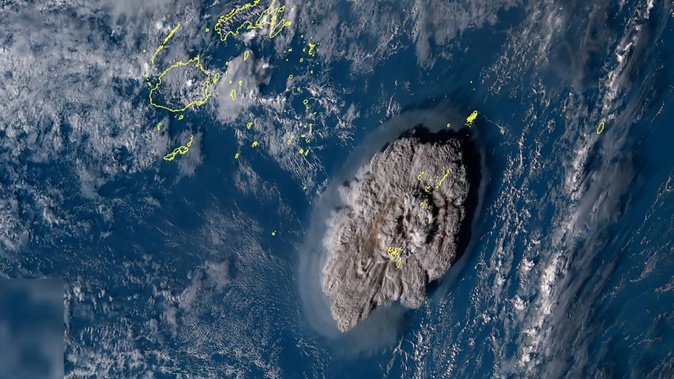
Last year’s gargantuan Tonga eruption sent avalanche-like flows across the seafloor that reached speeds of up to 122km/h - the fastest ever recorded.
The just-published observations add to a tally of records broken by the January 15, 2022 eruption of the submarine Hunga Tonga-Hunga Ha’apai volcano – and what was the planet’s biggest bang in 140 years.
Sending the equivalent of 58,000 swimming pools of water into the atmosphere, the eruption created a tsunami that reached tens of metres high and a rare pressure shockwave that travelled the globe multiple times.
A cascade of lingering effects in the climate might also see Earth cross the global warming landmark of 1.5C sooner than expected.
Now, scientists report that the underwater flows the eruption unleashed were some 50 per cent faster than any other observed.
As material from the volcanic eruption collapsed into the ocean, it triggered a huge surge of rock, ash, and gas that caused extensive damage to Tonga’s underwater telecommunication cables some 80km away.
The study’s co-author, Niwa principal scientist Dr Emily Lane, said the timings and locations of the damage to two subsea cables allowed her and colleagues to determine the speeds of the flows.
“Just a few months after the eruption, our team set sail to find out what caused it and what the impacts were,” Lane said.
“Surveys showed that Tonga’s domestic cable was buried under 30m of material, which we sampled and confirmed as containing deposits formed by a powerful seafloor flow triggered by the eruption.
“What’s impressive is that Tonga’s international cable lies in a seafloor valley south of the volcano, meaning the flow had enough power to go uphill over huge ridges, and then back down again.”
Niwa marine geologist Kevin Mackay said the seafloor flows had been one of the big unknowns following the event.
“With it being an underwater volcano, it’s something you rarely get to study just after the fact,” Mackay said.
“With atmospheric pressure waves circling the globe multiple times, and it being the largest atmospheric explosion on Earth in over 100 years, this just adds to that impressive list.”
The new insights would ultimately help scientists better understand the hazards of submerged volcanoes worldwide, said the paper’s joint-lead scientist, Dr Isobel Yeo.
“A huge number of the world’s volcanoes lie under the ocean, yet only a handful of those are monitored,” said Yeo, a volcanologist at the UK’s National Oceanography Centre.
“As a result, the risk posed to coastal communities and critical infrastructure remains poorly understood, and more monitoring is urgently needed.”
The paper, just published in the journal Science, was part of a joint international project including Niwa, The Nippon Foundation, and the Natural Environment Research Council in collaboration with 13 partners from Tonga, New Zealand, Australia, Germany, US, and the UK.
Take your Radio, Podcasts and Music with you









